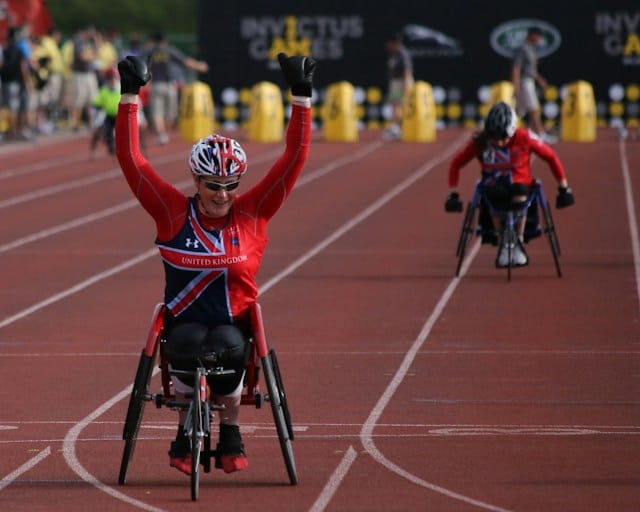In this era of inclusivity and equal opportunities, people with disabilities are not left behind. Accessibility to sports facilities is crucial in promoting active participation in sports among individuals with disabilities. The sporting world is increasingly embracing the need for inclusivity by designing facilities that cater to everyone, irrespective of their physical abilities. This article delves into how sports venues are designed to be accessible and inclusive for individuals with disabilities. We’ll explore the areas of focus, the equipment used, and the strategies employed to make the stadiums and sports centers more welcoming and user-friendly for athletes with disabilities.
Accessible Parking Areas
An essential part of making sports centers accessible starts right from the parking areas. For visitors and athletes with disabilities, the journey to the stadium or sports center begins at the parking lot. It is, therefore, necessary to provide parking spaces that are conveniently located and designed to accommodate people with disabilities.
Sujet a lire : How do athletes adapt their training and performance strategies for different altitudes?
Wheelchair-accessible parking spaces are wider than standard parking spaces to provide enough room for wheelchair ramps. Additionally, walkways are often provided from the parking space to the sports facility entrance. These paths are usually wide and free from obstacles to cater to wheelchair users and those with mobility aids.
Accessible Entrances and Exits
The design of entrances and exits plays a significant role in making sports facilities more accessible. Typically, sports venues incorporate ramps and lifts alongside stairs to accommodate wheelchair users and individuals with mobility impairments. The ramps are designed with a gentle slope to ensure they are safe and easy to use.
A lire aussi : What role do sports play in promoting social responsibility and philanthropy among athletes?
Automatic doors are also a common feature in accessible sports facilities. They allow for easy entry and exit, particularly for individuals using wheelchairs or crutches. The doors are wide enough and open automatically to facilitate smooth and effortless access to the facilities.
Accessible Seating Areas
Just as people with disabilities should have access to sports facilities, they should also enjoy the game in a comfortable and safe environment. Therefore, accessible seating areas are a crucial element in the design of sports venues.
In most stadiums, these areas are spread throughout the facility to provide a range of viewing options. They are designed to accommodate wheelchair users, with enough space for a companion to sit alongside. The seating areas are often covered to protect wheelchair users from adverse weather conditions.
Accessible Restrooms and Concessions
Inclusive design in sports venues extends to restrooms and concession areas. Restrooms are designed with wider stalls to accommodate wheelchair users. Handrails are installed on the walls for support, while sinks and hand dryers are mounted at accessible heights.
Concession stands, on the other hand, feature counters at a lower level to cater to wheelchair users. They are often spaced out to allow enough room for movement. Additionally, menus are presented in large print and Braille for individuals with visual impairments.
Training and Equipment
Inclusive design also incorporates training facilities and equipment for athletes with disabilities. Most sports centers now have specialized equipment for training athletes with various types of disabilities. For instance, gym equipment may be adapted to be used by people in wheelchairs, and swimming pools may have special access ramps for ease of entry and exit.
Furthermore, sports facilities often provide training programs tailored to athletes with disabilities. These programs are typically led by trainers who have a deep understanding of the specific needs of these athletes.
Designing sports venues to be accessible and inclusive for individuals with disabilities is not just about removing physical barriers. It is about fostering a culture of inclusivity, where everyone is provided an equal opportunity to participate and enjoy sports activities. It represents a stride towards a society where disability is no longer a barrier to participation, but a testament to human resilience and diversity.
Accessibility Guidelines and Regulations
Sports facilities are guided by specific regulations to ensure they meet the required standards of accessibility for individuals with disabilities. The guidelines provide a blueprint for designing accessible sports venues. These regulations are usually put in place by local and national authorities, and international bodies such as the International Paralympic Committee and the United Nations.
In the United States, for instance, sports facilities are subject to the standards provided by the Americans with Disabilities Act (ADA). The ADA requires that all newly constructed and altered sports stadiums must be accessible to persons with disabilities.
The regulations touch on various aspects of venue design, including accessible parking, entrance and exits, seating areas, restrooms, and concessions. Failure to comply with these regulations can lead to legal consequences and damage to the venue’s reputation.
To put these regulations into practice, sports facilities often work with accessibility consultants. These experts provide guidance on how to make sports venues fully accessible for individuals with disabilities. They ensure all aspects of the facility, from parking spaces, entrances, seating areas, restrooms, concessions, to training facilities, meet the necessary accessibility standards.
Moreover, these consultants also help sports facilities stay updated on any changes in accessibility laws and regulations. This is crucial as it ensures the sports venues remain compliant and continue to promote inclusivity in sports.
Conclusion: Enhancing Inclusion Through Design
In conclusion, the design of sports venues plays an integral role in promoting inclusivity in sports. By considering the needs of individuals with disabilities in the design process, sports facilities can ensure everyone has the opportunity to participate in and enjoy sports activities.
Accessible parking spaces, entrances and exits, seating areas, restrooms, concessions and training facilities are key components of an inclusive sports venue. These elements not only allow persons with disabilities to enjoy the games but also foster a sense of belonging and equality.
Accessibility in sports venues is not just about adhering to regulations. It is about showing respect and consideration for the rights of all persons, regardless of their physical abilities. By designing sports facilities that are accessible to all, we are fostering a sporting culture that celebrates diversity and inclusivity.
Moreover, inclusive sports venues are a testament to the resilience and strength of disabled athletes. They embody the spirit of sports – overcoming challenges and pushing the boundaries of what is possible. So, as we continue to design and build sports facilities, let us remember the importance of accessibility and inclusivity. For in the realm of sports, everyone, regardless of their abilities, should have an equal opportunity to play, compete and excel.






